COVID-19: Patient Isolation and Healthcare Literacy (or lack thereof)
Even
as the economy and Montana ‘opens up,” many of those in need of healthcare,
either at home or some type of healthcare facility, won’t enjoy the same level
of contact and interaction with caregivers and healthcare providers as they did
prior to shelter-in-placed and social distancing orders were ordered in
response to the threats posed by COVID-19.
Healthcare professionals and providers are doing a terrific job by
(1) working to deal with an array of the newly-imposed constraints and (2) expanding
the use of telehealth.
Through all of this, new procedures and policy must recognize
the abysmal state of patient healthcare literacy and patient prescription drug
literacy, in the case of the latter, particularly as it applies to
opioids.
There is an abundance of literature regarding how healthcare providers
assume that patients understand more than they are actually able to comprehend
and apply.
In the COVID-19 environment, as constraints and the application
of remote technologies advance and provider-patient relationships become more
remote, we must recognize that (1) patients are still patients with limited
general literacy and (2) some patients with different cultural backgrounds and
diseases that adversely affect their abilities to process information.
One article defines healthcare literacy as “the
extent to which individuals can obtain, process and communicate health
information, and how this will subsequently influence their capacity to make
appropriate health decisions.”
In the new normal, it is apparent that for the short- and intermediate-term,
patients will be more ‘isolated.’ Information is emerging about the psychological
effects of this isolation on vulnerable populations. We cannot afford to
overlook the compounding effects of isolation on healthcare literacy.
Making the point
Here are slides excerpted from a Power Point presentation from the Agency for Healthcare and Research Care and Quality.
While the data used is somewhat dated and has a distinct flavor for prescription medication literacy, the slides nonethless underscore the
(1) low levels of healthcare literacy in the United States and (2) dire consequences
of that fact.
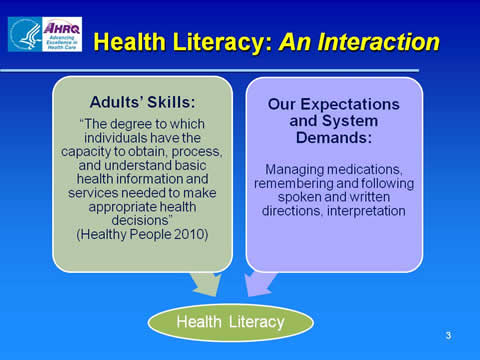
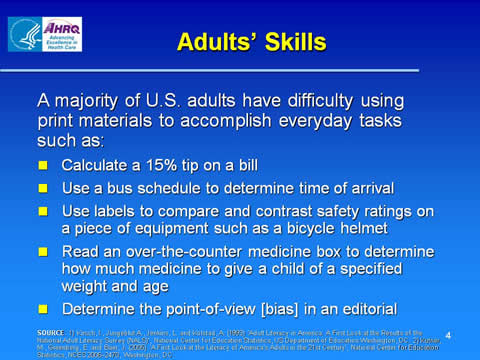
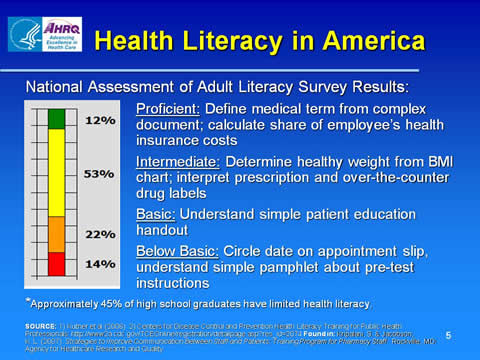
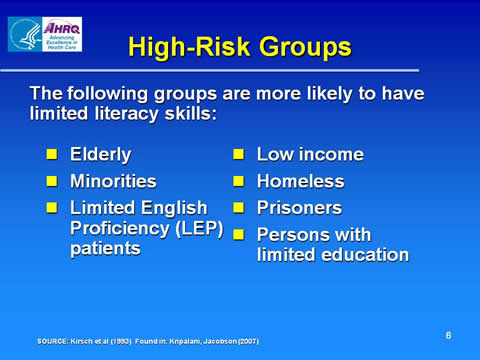
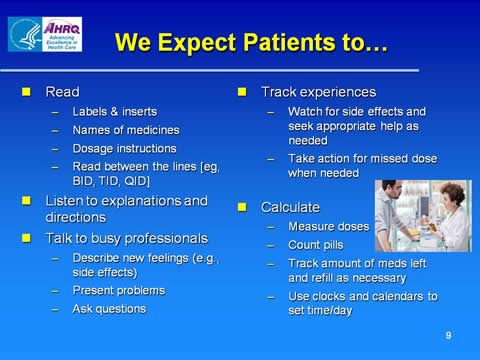
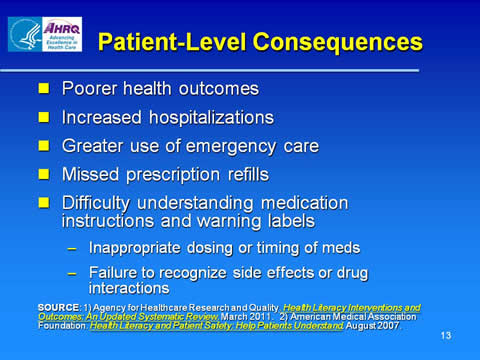

Comments
Post a Comment